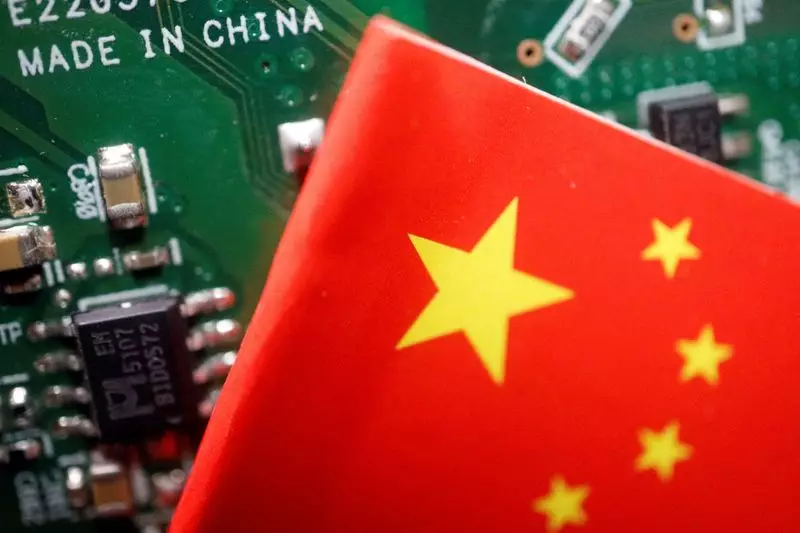In an environment marked by increasing geopolitical tensions, the U.S. has once again imposed fresh export controls on China’s semiconductor sector. This latest round of restrictions aims to cripple Beijing’s ability to strengthen its semiconductor manufacturing capabilities, targeting primarily high-bandwidth memory, specialized chipmaking equipment, and software essential for chip production. These measures, which affect 140 Chinese entities including prominent firms like Naura Technology Group and ACM Research, underscore a growing trend of economic fracturing across major global technology sectors.
The U.S. government’s rationale hinges on concerns surrounding national security and the potential military applications of advanced semiconductor technology. This has compelled Chinese companies to anticipate and adapt to restrictive measures by accelerating the localization of their supply chains—a necessary pivot not just for survival but for competitive sustainability in the global semiconductor landscape.
In light of the latest restrictions, many Chinese semiconductor companies have expressed a determination to enhance their domestic production capabilities. Firms such as Empyrean, known for its electronic design automation tools, voiced confidence in their ability to cope with the new regulations. They disclosed intentions to expedite their efforts in developing fully localized EDA tools, thereby alleviating reliance on foreign technology.
Moreover, companies like Jiangsu Nata Opto-Electronic Material have indicated that they have proactively built up stocks of essential materials and are exploring domestic alternatives. This strategy of self-reliance is echoed by the semiconductor testing systems provider Beijing Huafeng Test & Control Technology, which asserts that it has already localized its supply chain entirely. The subsequent embrace of localization by Chinese firms reflects their resolve to not only sustain operations amidst external pressures but to fortify their market positions against potential future restrictions.
Interestingly, while Chinese authorities condemned the U.S. export controls as economic coercion, the stock market reacted somewhat favorably to the news. Chip-making stocks saw a marginal uptick, indicating that investors may have perceived the new restrictions as less damaging than initially feared. Analysts from Jefferies projected an estimated $10 billion decline in capital expenditures for the Chinese semiconductor industry for the upcoming year, attributable to the regulatory landscape. Yet, contrary opinions suggest that the impact may not be as severe, given the recent trend of increased purchases of foreign-made equipment from global suppliers.
Data from China Customs reveals that imports of semiconductor manufacturing equipment soared by over 30% in the first nine months of the current year, totaling approximately $24.12 billion. This increase suggests that Chinese firms, rather than retreating, have been gearing up to bolster their capabilities despite external challenges.
Exclusion of Key Players: A Mixed Blessing
One notable aspect of the U.S. restrictions is the exclusion of ChangXin Memory Technologies (CXMT), a pivotal player in the production of memory chips for AI applications. This exemption surprised many industry observers who considered CXMT’s operations crucial in the context of the U.S. concern over advancements in military-grade technologies.
For South Korean suppliers to CXMT, this development offers a temporary respite, ensuring that their revenue streams linked to CXMT remain intact for the time being. Shares in equipment firms such as Jusung Engineering rose sharply following the announcement, indicating that markets react positively to perceived stability in an otherwise turbulent sector.
The situation raises questions about the long-term viability of both local and international semiconductor ecosystems. As the U.S. aims to curtail China’s technological ascent, it inadvertently provides an opportunity for domestic firms to solidify their supply chains and innovate independently.
Navigating through these turbulent waters will require Chinese semiconductor companies to balance immediate responses to regulations with the strategic goal of developing a robust, self-sufficient industry. The increasing focus on localization could spur the emergence of new technologies and the cultivation of homegrown talent, ultimately fostering a stronger domestic semiconductor ecosystem.
However, the industry must remain vigilant. As recent analyses suggest, while the U.S. restrictions have targeted critical components of China’s semiconductor ambitions, the continuing influx of foreign technology poses both a risk and an opportunity. The future will likely see heightened competition not just among companies within China, but also in the global market where rival nations vie for supremacy in technology and innovation.
While the U.S. imposes further restrictions on China’s chip industry, the resilience and adaptability of Chinese firms could redefine the landscape of global semiconductor manufacturing, paving the way for a new era marked by independence and innovation.

